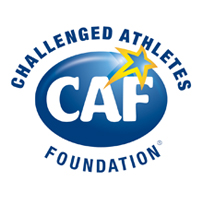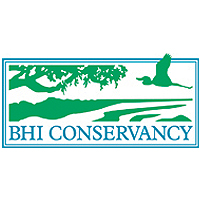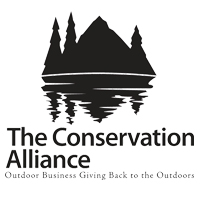See You on the Mountaintop
A Badwater 2004 Race Story
Badwater Finisher, 98, 99, 00, 01, 02, 04
Originally published in Marathon & Beyond Magazine, July 2005
Except for the glimmer of a thousand stars and the faint glow from a few porch lights, the desert outside my room where I am pacing is almost pitch black. It is two o’clock in the morning. A hand full of ravens flit and scratch on the ground near the parked cars. There is noise off in the distance from some animal life digging through the trash cans and the air conditioners drone and hum away in an attempt to keep the warm desert air from the rooms at the Stovepipe Wells Hotel. Otherwise it is quiet.
As I concentrate on the enormous challenge ahead my mind and nerves ramp up as adrenaline, excitement and anticipation slowly starts to drip into my system. The body finally realizes that in just a few hours it will be running the 135-mile race that begins at Badwater, California, the lowest spot in the United States, and snakes through Death Valley and over two mountain ranges before finishing at the Portals halfway up Mt. Whitney. This footrace is considered the toughest in the world. There will be no more sleep tonight and probably for the next few days.
Although I have been here many times, this year is more special. At the pre-race meeting yesterday and at his eulogy in January, I honored my fallen friend, Jason Hunter, before his family, his friends and many great athletes. I dedicated this race as well as the traditional eleven-mile climb to the top of MT Whitney that follows it, in Jason’s name. I am sure that he will be out here, at least in spirit, for guidance and inspiration and to help me fulfill this tall order. I have but one goal now and that is to finish. There are no other options.
In the minutes before the ten o’clock start, I mingle and socialize with the other runners aside the Badwater sign and the Kiehl’s Sponsorship Banner draped across the road were the race begins. I notice that the Sea Level sign that was missing last year is again attached and perched 282 feet above our heads on the rugged side of the Black Mountains. All is well. The National Anthem is played in our honor and hundreds of photographs are taken just seconds before the starting countdown to this grueling event. It is good to be back. This will be my seventh consecutive Badwater Race.
During the first twenty five-miles, while I am still fresh and the endorphins stream through my system, I run and joke with some of the other runners. There is Chris Frost who gives me a Lance Armstrong yellow charity wristband, prompting the joke that we are engaged again. I wonder if his fiancée, Tracey, knows about this? And Lisa Stranc-Bliss, the running Doctor, who pronounced me alive enough to continue on during a bad spell in last year’s race. Want to feel humble? Run a few miles with everyone’s favorite and ultrarunning legend, Marshall Ulrich.
We run north along the great sprawling salt basin with its colorful landmarks reminding us that we are indeed in Death Valley. The Timbisha Shoshone Indians call it “Land on Fire”. We pass by Dante’s View, Coffin Point, Devil’s Wheat Field, Furnace Creek, Salty Creek, Devil’s Golf Course, the Sand Dunes and Stovepipe Wells. The land is picturesque but inhospitable. Left unattended, one could die out here in just a few minutes.
My van is filled with tons of supplies and my crew; Christine (my wife), Vince Pedroia, Juli Dell’Era and John Rodger will be alongside me the entire race. They will attempt to keep me fed, hydrated and cooled off by using squirt guns and sprayers. The van itself looks like a rolling billboard with messages, memorial banners and inspirational drawings from special children taped on both sides. We have another vehicle at Stovepipe Wells to be used to shuttle into town for rest, supplies, Snicker bars and other emergencies.
Around the thirty-mile mark I comment that it is unusually cool, maybe only 115-degrees. But that’s about to change; someone hears my big mouth and begins to stoke it up a few notches. By the Beatty turnoff (mile-35) where the race turns to the west, it is at least 125-degrees. Headwinds generated somewhere in the canyons, pick up the radiated heat from the pavement and are superheated even more as they sweep furiously across the Death Valley basin.
For the next seven-miles the suffocating winds are incessant, and it feels like its 140-degrees or more. It’s like opening a furnace door and standing in front of it with a fan blowing the heat on you. The mouth and eyes dry out, unprotected skin burns, the nasal passages and lungs sting, and it becomes hard to breathe. The cooling body sweat and the water sprayed on the running clothes evaporate immediately, and my core temperature rises as intense heat presses heavily against every cell. Fortunately the months of training in a 180-degree sauna have prepared me for this. I handily move ahead, although the heat will take its toll later tonight.
At Stovepipe Wells (mile-42) I could take a quick break. In the past I have cooled off in the small pool, which is now filled with runners and crews, or I’ve used the shower to rinse the heat away but not this year. I have found that the body starts to shutdown once it stops to relax for more than ten-minutes. I have suffered severe cramping and have witnessed convulsions and techni-colored barfathons by other runners in this pool area. Since this has a tendency to ruin your day, my plan is to continue to go forward and take short respites on the stoop of the van every few hours. So, I just sneak on by.
Then I face the most difficult part of the Badwater Race: the seemingly never-ending sixteen-mile 4900-foot climb to Townes Pass (mile-58). The first few miles are directly into the sun and the hot winds continue to blow. As the sun sets, Chris Frost catches me. When we reach the Emigrant Campground halfway up, we take our first mini break. Kari Marchant, a live-wire crewmember, joins us and we gradually move up the mountain now dimly lit by a half moon and the Milky Way. We pass the time by laughing at raunchy jokes. I have to tell all of them, because they didn’t know any.
At the top, next to the radiator tank, we take another short break. The wheels are beginning to come off and the tired body wants to lie down. This race has become serious. The weariness that is clinging to the body is similar to tying on a spare tire and dragging it to the finish line. Chris naps while I cool off my legs with iced towels and gorge on peanut butter, PowerAde and Ensure.
We then run other eight-miles, down the backside of the pass to the edge of the salt flats in the Panamint Valley. Looking across this five-mile basin and into the distant hills, we can see a string of a dozen or more muted red flickering brake lights. My emotions lift knowing that I am in the middle of other runners and their crews who are also struggling along this course in order to realize their goals. Misery loves company. As soon as we catch a runner, Chris tags along and they move ahead into the night. I am alone again
Suddenly, on the side of the road, there is a quick and blurred movement. I turn and catch a glimpse of a coyote, maybe more, scrounging around in the bush. The one closest is gaunt, wiry, skittish, nervously pacing and panting. Scrawny and undernourished, it salivates from hunger pangs. I immediately flash on Harry, the protagonist in Ernest Hemingway’s “The Snows of Kilimanjaro”, who lies on a cot in the African savannah dying from the gangrene that has invaded a cut in his leg. Hemingway writes, “… it occurred to him that…he was going to die…and…the hyena slipped slightly along the edge of it”.
Oops! I make some noise and flash my lights towards these guys and they slink away into the scrub. But I sense that they are still close by: dug in, crouched, waiting, peering, hungry and ready to strike for their next meal. I know that I am rank and it must be wafting in their direction. Hopefully they have targeted a smaller morsel in the area. I decide to hurry up before they drag me off into the desert.
Fortunately dawn is approaching and the coyotes and other animal life will soon vanish into the sand in this sparse desert. They will attempt to survive another day somewhere buried, hidden and protected from the brutal heat of the scorching sun. And we runners think that this Badwater Race is tough. For a moment I contemplate their difficult lives: if they manage to survive during the hostile summer then we should be able to handle a few days.
I run to the Panamint Springs Resort (mile-72) looking forward to a short break. I have been active with minimal rest since the start of the race. My overworked, strained and taxed body is fighting back. It needs to be rejuvenated, and it wants it to happen right now. A ten-minute respite turns into forty-five as an unsuccessful catnap is attempted. Then, in another survival moment, I step inside the hotels bathroom/septic system for relief. Whew! Yet, there is even a richer prize than basking in all this glory. Anyone finishing this race in less than forty-eight hours is awarded a cherished and coveted brass belt buckle.
After gobbling down a cup full of freshly made scrambled eggs and chasing them with a Starbucks Frappuccino, it is time to run up another steep eight-mile winding pass to Father Crowley’s (mile-80). The views along the way are breathtaking. The multi-colored canyon walls that spill into the salt flats below are incredibly beautiful. These huge chasms are routinely used as military training grounds for the F-16’s that swoop down deep inside after their imaginary prey.
My crew is finally able to make cell phone contact with a hometown radio station. After I broadcast my progress report, the host asks me if I have seen my shrink lately. Well, yes I have, but obviously it isn’t working. I just hope the kids that I run for are listening.
At the top it is time for a change of shoes. One sock is soaked in blood and the other is glued to a severe blistering problem and will hamper my effort as the race wears on.
The next ten-miles of gradual rolling hills is brushed in purple and yellow hues and dotted by old abandoned silver mines that probably dead-end into shattered dreams. The landscape is filled with the colors and scents of sage and withered yucca.
A huge rock and dirt formation near the Death Valley Park entrance sign (mile-85) is shaped in the formation of a Stegosaurus. It has several rows of bony plates along its back, so maybe it is one, partially buried, camouflaged and sleeping. Two years ago during the night I saw them crawling across the desert floor. There are times during this race when the demons stir about somewhere within the dark corners of the tired mind and it begins to hallucinate and sees strange things. But, I know that the dinosaurs I saw were real and I suspect that they are still out there, somewhere on the move, despite evidence that they are extinct.
It is early morning and the headwinds return like a giant heat-searing hair dryer. A chronic Achilles problem is flaring up and progress becomes more of a run-hobble. At the Darwin turnoff (mile-90) the race bends north and I will attempt to run the next fifteen-miles that are mostly downhill. The winds that are now at my back help to push me along.
At mile ninety-seven a minor problem has developed. We are out of ice, low on water and the drinks are warm and hard to swallow. Right on time, Nancy Shura from the medical team stops and gives us all her leftover ice and water. Ironically, a similar scene occurred last year when Monica Scholz stopped along the Panamint Salt Flats and replenished my depleted supplies.
At the 100-mile mark high up in the mouth of the pass, I can finally see the great sprawling Owens Valley. But, three-miles later, I can’t run anymore. The hot tailwinds have cooked my hamstrings and they are now misfiring. We ice them down and I wear long pants in a feeble attempt to keep them cooler. But the damage has been done: they will not respond to this tinkering and I struggle five-miles into the weather-beaten trailer-park burg of Keeler (mile-108).
After a short rest I still feel drained and wilted from the battering of intense heat over the last two days. For the third time in the last five-years the winds are blowing sand and ash from fires in the Sierras across the arid and desolate Owens Lake and into our path. As I gag and choke on the smoke I resolve to plod along until the sun sets behind the mountains and then hopefully run into Lone Pine. My wife and Juli drive into town in order to rest for the final climb.
Once I start running I feel much better. But just a few miles later, I need water and my van is nowhere in sight. Although it is now dark, it is still hot and I begin to overheat. Unable to continue I wait and waver on the side of the road for about thirty-minutes until the van finally shows up: John had stayed behind to make sandwiches in preparation for the final climb. He should have gone ahead to stay in touch and maintain a sense of timing, but, that’s okay. The heat has tortured everyone and understandably a misjudgment was made.
I shuffle the last four-miles into Lone Pine (mile-122), where I rest and cool down at the hotel. The air conditioner gives me goosebumps and my crew believes I am suffering from heat stroke. They call a race medic, who determines the real problem: that it was time to get going and finish this thing off before anything else went wrong.
Shortly, we start up again. Even though Vince and I laugh most of the way, the steep and relentless thirteen-mile climb to the finish at the Portals (mile-135) is pain-stakingly slow. I need to leave something in my tank for after the race, because I still have to climb to the top of MT Whitney. During a weary moment a massive pack of large rats at the side of the road sweeps towards me. Startled for a few seconds, I move over to our van while Vince protects me from the “varmints”. He tells me that I had likely just flashed on some grass that was growing through the cracks in the roadbed. I am not so sure and hurriedly move forward.
With four-miles to go we enter the first of the two-long switchbacks and realize that the end is only an hour away. The pace quickens, there is more spring in the step and now a renewed sense of urgency to polish this Badwater off.
My crew will walk with me the last mile. Everyone is more alive, giddy and spirited, except for nearby campers who yell from their tents to shut up so they can sleep. Sorry, but fat chance. With only a few bends in the road to go the physical and mental demands step aside. As they begin resting on the back burners, I start tripping on my emotions.
With our hands held high and a great whoop we cross the finish line together. Each year that I break the tape a great sense of achievement and pride flushes my system. It is the successful culmination of months of training and a few days of intense hard work over this extremely challenging course. Badwater will never get old. Finishing this race in 43-hours and 28-minutes with my beautiful wife and crew by my side is as good as it will ever get.
Later, sitting alone and relaxed on a bench in front of the hotel, I reflect on what I had accomplished the past few days:
Although I had survived several mini disasters, days of extreme heat and cold, drying winds, the ever-present Achilles tendonitis, severe blistering, vertigo, and incredible weariness, I never at any time ever thought about quitting. I hope that this will set a positive example and inspiration for all the children.
I was fortunate to have run, walked and shuffled, along with many of my friends, through Death Valley and up Mount Whitney. There are very few places on earth that equal in grace and majesty.
I finished Badwater and summated Mt. Whitney for my friend, Jason, a satisfying tribute to his incredible life. It just really feels good that I did what I had to do.
And finally, I will soon be going back home into the “real world” with restored confidence and convinced that if you can do Badwater, you can do anything.
Thanks to Badwater Race Director, Chris Kostman, and all the people from AdventureCorps. There would be no Badwater Race without their effort. It was also comforting to see the emergency vehicles, the medical teams and all the race personnel cruising around and monitoring for any problems.
Thanks to Kiehl’s for their title sponsorship and all the skin care products.
Thanks to Injinji for the socks touted to prevent blisters. Maybe I should have worn them. Well, duh!
Thanks to Hammer-Gel for the Endurolytes. These things work great. Now, can you make a pill to prevent aged related aches and pains? Better hurry.
Kudos to Dean Karnazes, Ferg Hawke and Monica Scholz. Breaking 30-hours on this course is a major achievement.
To every crewmember and especially mine, thank you for your sacrifices. It could not have been done without your help.
Thanks to nurse Nancy Shura for stopping to help just in time.
Thanks to Marshall Ulrich, the consummate gentleman, for everything. But don’t forget Heather next year.
Congratulations to Lisa Stranc-Bliss for her incredible 37-hour finish and then the MT Whitney summit. It is amazing that Lisa and others have figured out this Badwater Race on their initial attempt. Heck, I have been experimenting out here for seven-years and still manage to screw it up.
Congratulations to Chris Frost for his fine effort. Each year he has a better finishing time and I know why: he has all my good stuff. Last year he stole my best super-soaker. This year he not only ripped off one of my new hand held spritzers but he also ate all my premium turkey slices. For awhile I thought that he had hijacked my van with the rest of my secret supplies and even kidnapped my wife. The engagement is off and next year I am bringing a security guard.
Most of all thanks to my wife who has put up with this kind of insanity for 36 years. Everyone appreciates all her hard work, sincerity and compassion, but not as much as I do.
It was a privilege to be a part of the 2004 Kiehl’s Badwater Ultramarathon.
I can’t wait until next year.
I will be back.








